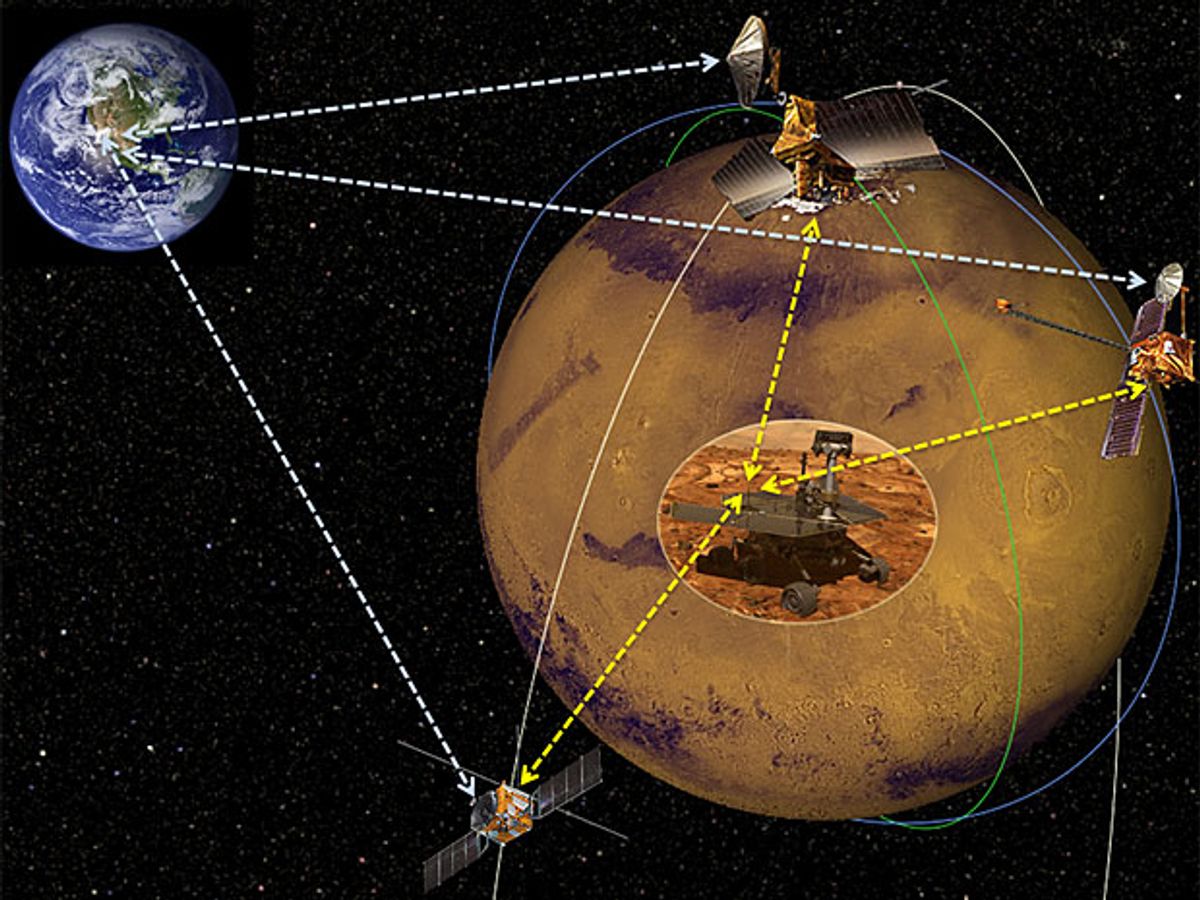In a move likely to both incite critics and excite supporters of the agency, last week NASA issued a request for proposals for a possible commercial communications network around Mars.
The request comes as the space agency mulls its options for future unmanned—and ultimately manned—Mars missions. NASA currently operates two orbiters around the red planet that also serve as relay stations for other Mars missions, most notably the celebrated Mars rover program. On 21 September 2014, the Mars Atmosphere and Volatile Evolution (aka MAVEn) orbiter will add one more node in the communications network, making three NASA-operated Mars relay satellites.
But, according to John Grunsfeld, associate administrator of the agency’s Science Mission Directorate, after MAVEn, no other orbiting communications platforms are on the books for the red planet. Yet several Mars surface missions and other small orbital missions are will be arriving over then next few years.
“Depending on the outcome, the new model could be a vital component in future science missions and the path for humans to Mars,” Grunsfeld said in a prepared statement.
As IEEE Spectrum reported in 2009, NASA has already called for development of a for-profit communications network for lunar missions too. However, if the 2009 request for proposals yielded any concrete lunar-data-network commercialization plans, we aren’t aware of them.
More promising has been NASA’s own tests last year of a 622 megabit per second laser uplink to the moon. The current Mars request cites the agency’s pulsed laser transmission as a possible “area for improvement” over present-day Mars communications technology.
NASA requests that all burgeoning Bells submit plans for their proposed Mars Telephone and Telegraph network by 25 August.
Margo Anderson is the news manager at IEEE Spectrum. She has a bachelor’s degree in physics and a master’s degree in astrophysics.



